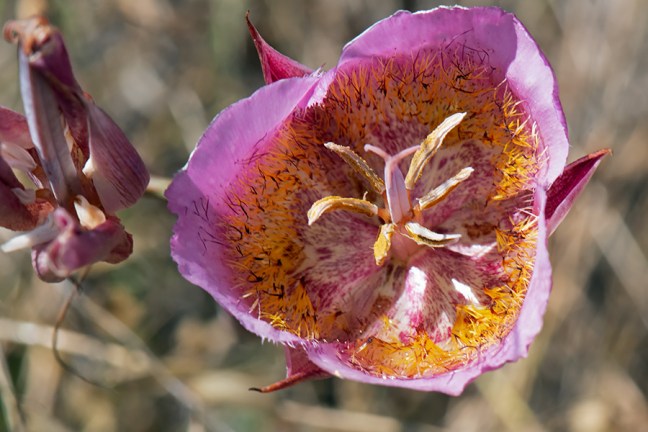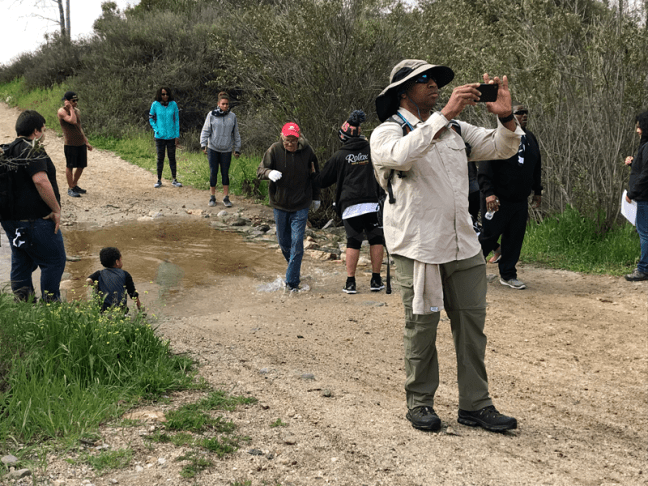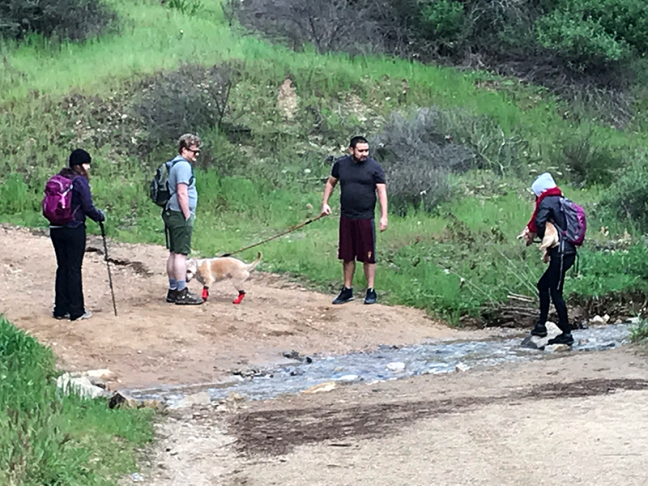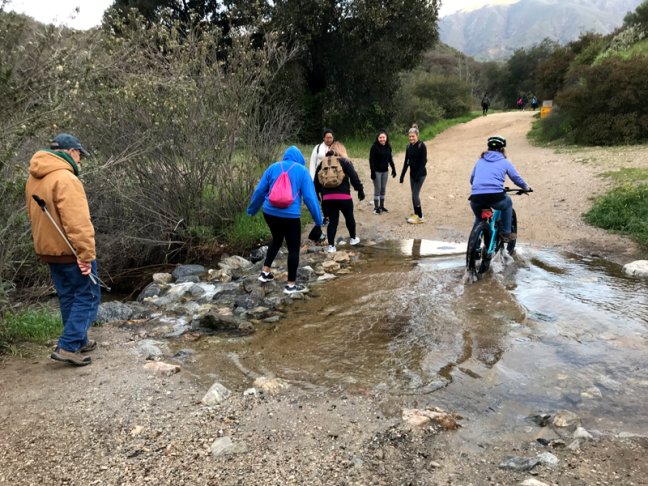A Saturday walk in Johnson’s Pasture revealed that a banner year for Mariposa Lilies! Do go up and check them out:
Lots of other flowers are blooming – Cardinal Catchfly (Silene laciniata ssp. laciniata), Yarrow (Achillea millefolium), Wavyleaf Soap Plant (Chlorogalum pomeridianum var. pomeridianum), Heart-leaved Keckellia (Keckiella cordifolia), Sticky Monkey Flower (Diplacus aurantiacus), Four-spot and Wine-cup Clarkia (Clarkia purpurea), Leafy Fleabane (Erigeron foliosus), Deerweed (Acmispon glaber), Spanish Clover (Acmispon americanus var. americanus) – which is neither Spanish nor a clover, Stinging Lupine (Lupinus hirsutissimus) and, of course, California poppies (Eschscholzia californica). Bees and butterflies were busily visiting the flowers, including Yellow-faced Bumble Bees (Bombus vosnesenskii) on Deerweed, a tiny unidentified native bee on Leafy Fleabane, a Gray Hairstreak (Strymon melons) on Deerweed, and a Reakirt’s Blue (Echinargus isola) – unusual in our area – on Spanish Clover.
California Buckwheat and two native milkweeds (Asclepias fascicularis and Asclepias eriocarpa) are just starting to bloom, so come back soon to check them out. Both are magnets for lots of interesting insects.





















